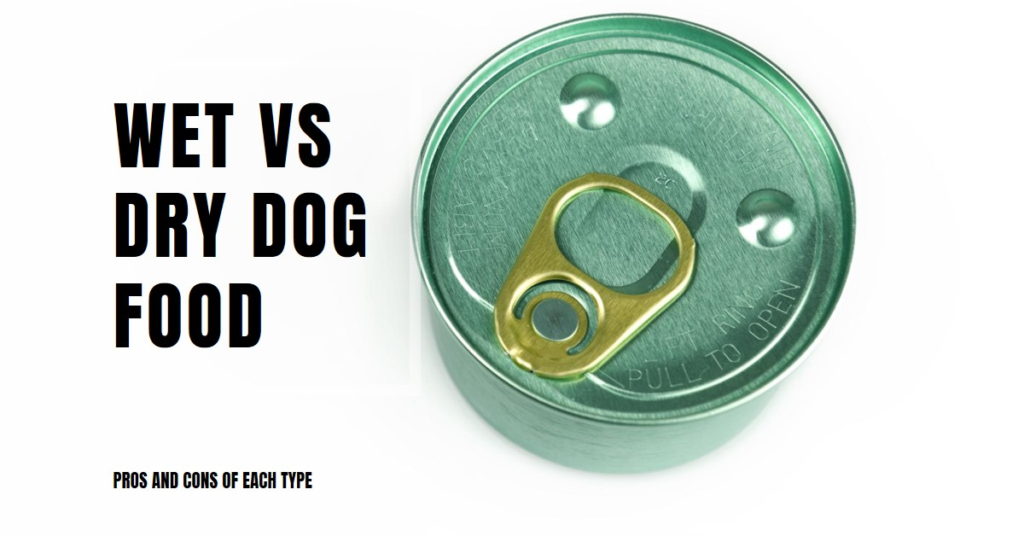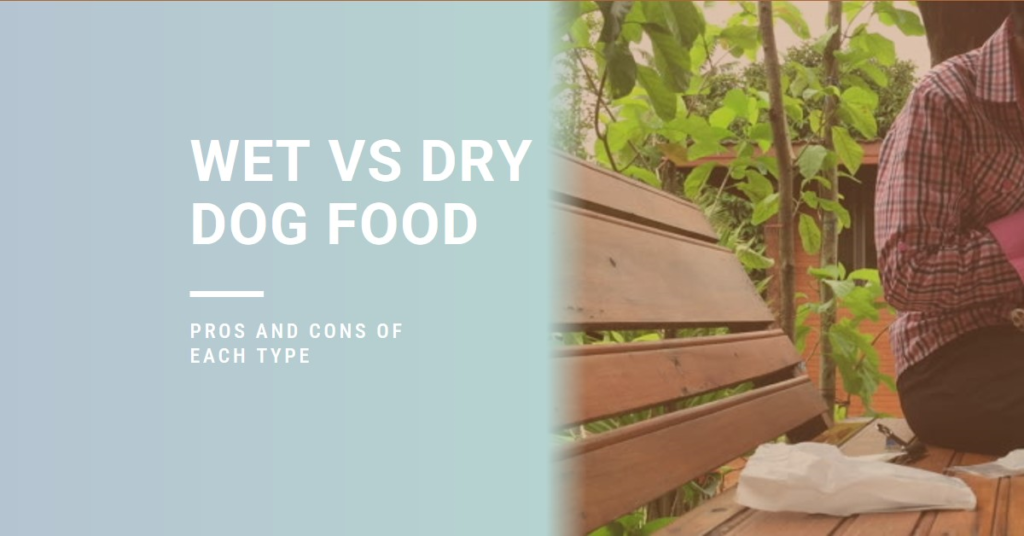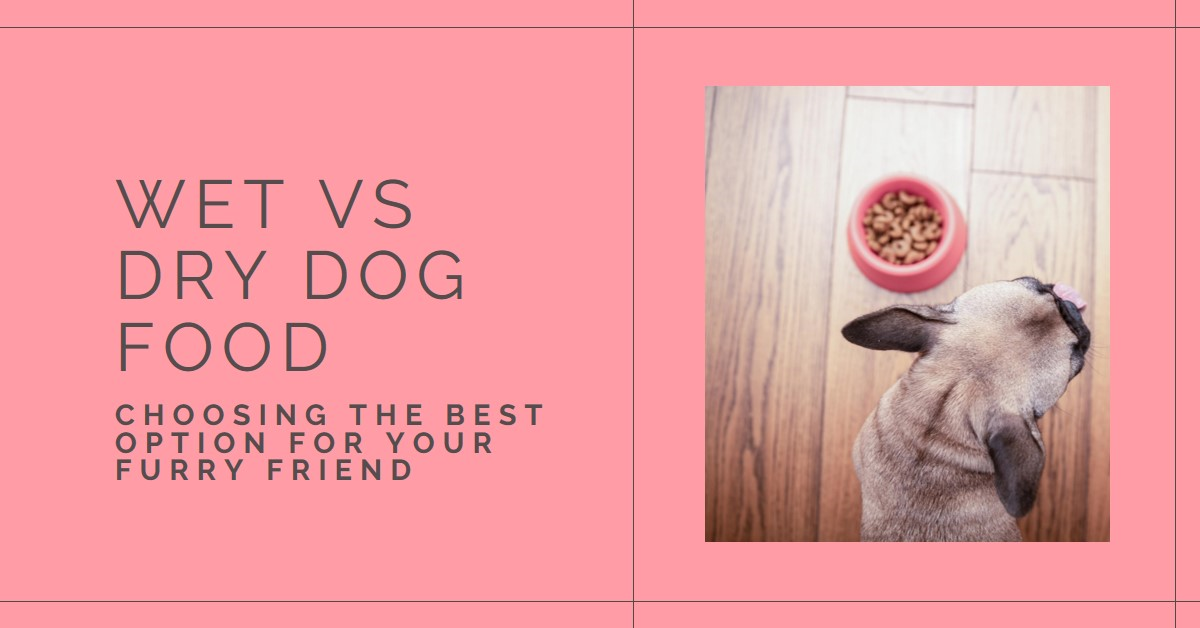Choosing the best food for your dog is an important decision that can impact their health and well-being. With so many options available, deciding between wet and dry dog food can be overwhelming. Both types have their own unique advantages and disadvantages, and the best choice for your furry friend will depend on their individual needs and preferences. This Article will explain In Depth info about Wet Dog Food versus Dry Dog Food.
Understanding the Differences: Wet vs. Dry Dog Food
Wet dog food typically contains around 78% moisture, offering a higher water content than dry food. This can benefit dogs who don’t drink enough water or have urinary tract issues. Wet food also tends to be more palatable due to its stronger scent and taste, making it a good option for picky eaters. However, it is generally more expensive than dry food and requires refrigeration after opening, making it less convenient for storage.
On the other hand, dry dog food contains around 10% moisture. It is more cost-effective and has a longer shelf life than wet food. Dry food is also easier to store and transport, making it a convenient choice for busy pet owners. However, some dogs may find dry food less appealing due to its lower moisture content and blander taste.

Factors to Consider When Choosing Dog Food
- Age: Puppies have different nutritional needs than adult dogs and may benefit from a diet specifically formulated for their growth and development. On the other hand, senior dogs may require a lower-calorie diet with added nutrients to support their ageing bodies.
- Health: Dogs with certain health conditions, such as kidney disease or allergies, may need a specialised diet to manage their symptoms. Consult your veterinarian to determine the best dietary options for your dog’s needs.
- Lifestyle: Active dogs require more calories than less active dogs. If your dog is highly active, they may benefit from a high-protein diet to fuel their energy needs.
- Budget: Wet dog food is generally more expensive than dry food. Consider your budget when choosing an option that fits your financial constraints.
- Nutritional Content: Explore the differences in nutrient composition between wet and dry dog food, highlighting the varying levels of protein, fat, carbohydrates, and moisture. Explain how these differences can impact your dog’s health and energy levels.
- Digestibility and Hydration: Discuss the digestibility of wet and dry food, considering the impact of moisture content on absorption and gut health. Additionally, explore the importance of hydration and how each type of food contributes to your dog’s water intake.
- Dental Health and Weight Management: Examine the potential benefits of wet and dry food for dental health, considering factors like texture and chewing action. Additionally, discuss the role of each type of food in weight management, considering calorie density and portion control.
- Cost and Convenience: Compare the cost per serving of wet and dry dog food, considering factors like packaging size and shelf life. Additionally, discuss the convenience of each option in terms of storage, preparation, and feeding.
- Individual Preferences and Special Needs: Highlight the importance of considering your dog’s preferences and any special needs when choosing between wet and dry food. Discuss factors like taste, texture, allergies, and health conditions that might influence your decision.
What Are The Main Ingredients To Look For In Both Types?
Whether you opt for dry or wet dog food, scrutinising the ingredient list is crucial. Look for high-quality ingredients for both types that cater to your dog’s specific nutritional needs.
For the kibble crunchers, look for ingredients like:
- Real meat: This should be the first or second ingredient, not vague terms like “meat meal” or “meat by-products.” Opt for chicken, beef, lamb, or fish as the primary protein source.
- Whole grains: Brown rice, oatmeal, and barley offer essential carbohydrates and fibre for sustained energy and healthy digestion. Avoid wheat, corn, and soy, which can trigger dog allergies.
- Healthy fats: Omega-3 and omega-6 fatty acids are crucial for skin and coat health. Look for ingredients like salmon oil, flaxseed, or chicken fat.
- Fruits and vegetables: These add essential vitamins, minerals, and antioxidants. Sweet potatoes, blueberries, and carrots are great choices.
- Probiotics and prebiotics: These gut-friendly bacteria support a healthy digestive system and immunity.

For the gravy-gobbling gourmands, prioritize ingredients like:
- High-quality protein: Like dry food, real meat like chicken, lamb, or turkey should be the show’s star.
- Hydration hero: The high water content (around 78%) in wet food keeps your pup hydrated, which is especially beneficial for seniors or picky eaters.
- Nutrient-rich broth: Look for broths made with real meat or vegetables, not just water, for added flavour and nutrients.
- Minimal fillers: Steer clear of ingredients like corn gluten meal, wheat gluten, or artificial flavours and colours. These offer little nutritional value and can upset your dog’s tummy.
- Vitamins and minerals: Check for essential vitamins and minerals like calcium, phosphorus, and vitamin A to ensure your pup gets a complete and balanced diet.
Conclusion
Ultimately, the best dog food for your furry friend depends on their needs and preferences. Consider the abovementioned factors and consult with your veterinarian to make an informed decision. Remember, a healthy diet is essential for your dog’s overall well-being and can contribute to a long and happy life.
Frequently Asked Questions
- Q: Which type of food is better for my dog’s health?
A: The best type of food depends on your dog’s individual needs and preferences. Consult your veterinarian for personalised recommendations.
- Q: Is wet or dry food easier to digest?
A: Wet food generally has higher digestibility due to its higher moisture content. However, dry food can also be easily digested by most healthy dogs.
- Q: Which type of food is better for dental health?
A: Dry food’s crunchy texture can help scrape plaque and tartar off teeth. However, wet food can also contribute to dental health by stimulating saliva production.
- Q: Is wet or dry food more cost-effective?
A: Dry food is generally more cost-effective per serving. However, wet food may be more appealing to picky eaters, potentially reducing food waste.
- Q: Can I mix wet and dry food?
A: Yes, mixing wet and dry food can be a good option for picky eaters or to increase water intake. However, consult your veterinarian to ensure the proper balance of nutrients.
Also Read:


